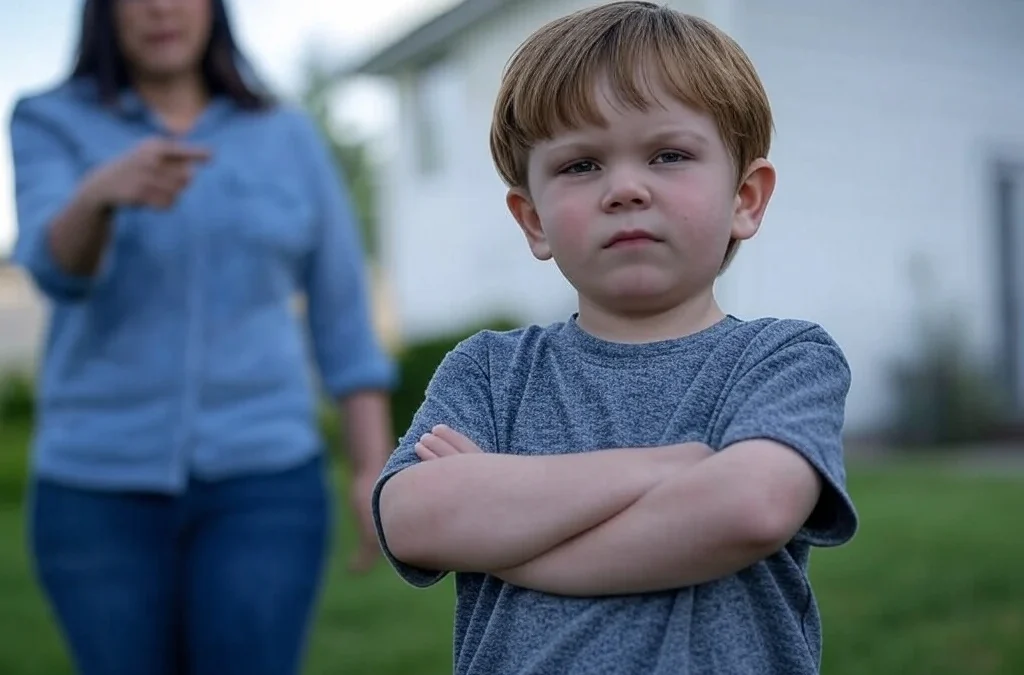The phrase vice versa is short, but it carries a lot of meaning. You’ve probably heard it in daily conversations, read it in books, or used it without even thinking about it. Still, many people aren’t exactly sure what vice versa means—or how to use it properly. This article explains the meaning of vice versa in a clear way and gives you 30 simple, real-life examples that show how it works.
If you’ve ever said something like “He helps me, and I help him too,” then you already understand the idea. You just haven’t used the phrase yet. With the help of examples and definitions below, you’ll be able to recognize and use vice versa with confidence.
What Does Vice Versa Mean?
“Vice versa” is a Latin phrase that means “the other way around” or “in reverse order.” It’s used to show that the opposite of what was just said is also true. When you say vice versa, you mean that two things can be switched or exchanged, and the meaning stays the same.
Example:
She helps him with chores, and vice versa.
→ This means he also helps her with chores.
The phrase is often used in everyday conversations to save words and avoid repeating the same idea in reverse.
The Best Examples of “Vice Versa”
1. She helps him with math, and vice versa.
He helps her with English, and she helps him with math. Vice versa means they both help each other, just in different subjects.
2. Parents teach children, and vice versa.
While parents usually teach life skills, kids often teach parents about technology. The roles can reverse.
3. I respect him, and vice versa.
I treat him with respect, and he respects me too. It works both ways.
4. The dog follows the boy, and vice versa.
Sometimes the boy leads the dog on a walk. Other times, the dog leads and the boy follows. Vice versa shows they switch roles.
5. Teachers learn from students, and vice versa.
Teachers give lessons, but students often bring new ideas or challenge old ones. Both sides learn from each other.
6. You can call me anytime, and vice versa.
I can call you, and you can call me. The option goes both ways.
7. He supports her career, and vice versa.
They both put effort into helping each other succeed. It’s a two-way street.
8. We trade books, and vice versa.
I lend him books, and he lends me his. The exchange goes both ways.
9. The mother looks after the child, and vice versa.
As the child grows, the roles can reverse. The child cares for the aging parent.
10. He trusts her, and vice versa.
Trust goes both ways in a strong relationship. One trusts the other, and the feeling is mutual.
11. The company relies on the client, and vice versa.
The business needs the customer to make money. The client needs the company for services or products.
12. She motivates him, and vice versa.
On tough days, she lifts him up. When she feels low, he pushes her to keep going.
13. The boss values the team, and vice versa.
A good leader respects the team, and the team respects the leader in return.
14. You can teach your friend to cook, and vice versa.
If you know how to make pasta, you can show them. If they know how to bake, they can teach you.
15. He learns from his mistakes, and vice versa.
He also learns from her mistakes, and she learns from his. Everyone learns from each other’s experience.
16. The fan cheers for the team, and vice versa.
Fans support the team, and the team often shows appreciation to the fans. It goes both ways.
17. She drives him to school, and vice versa.
Some days she takes the wheel. Other times, he does. They take turns.
18. I cover for him at work, and vice versa.
If he’s late or busy, I step in. If I can’t make it, he helps me out.
19. One friend forgives the other, and vice versa.
Sometimes you make a mistake, sometimes they do. Forgiveness should work both ways.
20. I explain things to my grandma, and vice versa.
I help her with phone settings. She helps me understand family history.
21. She loves his cooking, and vice versa.
He enjoys her meals, and she enjoys his. They both appreciate each other’s effort.
22. The sun warms the earth, and vice versa (sort of).
The earth reflects heat back into the atmosphere. It’s not exact, but energy flows both ways.
23. I depend on my team, and vice versa.
I trust them to do their part, and they count on me to do mine.
24. She compliments him, and vice versa.
They both say nice things to lift each other up.
25. The older sibling teaches the younger, and vice versa.
Big brothers or sisters often guide the little ones. But sometimes the younger ones bring fresh views.
26. We watch each other’s pets, and vice versa.
When I travel, they feed my cat. When they leave town, I care for their dog.
27. Neighbors help each other, and vice versa.
You lend a tool one day, and borrow one the next. It’s friendly give and take.
28. She supports his dream, and vice versa.
He encourages her goals, and she pushes him to follow his. Support flows both ways.
29. The coach trusts the player, and vice versa.
A good coach believes in the player, and the player believes in the coach’s plan.
30. I text her first sometimes, and vice versa.
Some days I start the chat. Other days, she does. It’s balanced.
Synonyms of Vice Versa
-
The other way around
-
In reverse
-
Conversely
-
The opposite way
-
Backwards
-
Reversely
-
Mutually
-
In turn
-
Reciprocally
When Should You Use “Vice Versa”?
Some phrases sound smart but don’t always help the message. Vice versa is not one of them. Used the right way, it’s clear, useful, and saves time. But there’s a catch: you shouldn’t use it just to sound clever. It has a very specific meaning. Misusing it can confuse people or make your sentence unclear.
So, when should you actually say vice versa?
Use it when you’re talking about a two-way situation—when the second part of a sentence could be flipped and still be true. That’s what vice versa means: the reverse is also true.
Here’s the key: if swapping the parts makes sense and keeps the meaning, then vice versa is likely the right choice.
For example:
-
“She admires him, and vice versa.”
This means he admires her too. It’s short, but it works.
A lot of people use vice versa when they shouldn’t. Others don’t use it at all, even when it fits. Understanding when to use it — and when not to — can make your writing and speaking much stronger.
We all want to express ourselves better. That’s part of being understood. Knowing how to use a phrase like vice versa is one small step in that direction. And once you start using it properly, you’ll hear it more, notice it more, and appreciate how much meaning two simple words can hold.
Vice Versa Meaning in Relationships
In relationships, vice versa isn’t just a phrase — it’s often the foundation of what makes a connection work. At its core, vice versa means that what one person gives, the other gives back. Not always in the same way, but with the same care or effort.
It could be something small. One person makes coffee in the morning. The other does the dishes. No scorekeeping — just balance. Respect goes both ways. So does kindness, patience, and trust. That’s vice versa in real life.
A relationship where one person gives and the other only takes usually doesn’t last. People feel it when effort isn’t mutual. You help your partner through stress, and vice versa, they’re there for you when your day falls apart. That’s not just about fairness — it’s about feeling seen.
This doesn’t mean everything must be equal all the time. Sometimes one person gives more. Life isn’t always 50/50. But when the relationship is healthy, there’s a natural back-and-forth. You show up for them. They show up for you.
If you’re wondering how to use vice versa in love or in a long-term relationship, think of it like this:
“He supports my goals, and vice versa.”
That tells you all you need to know about the dynamic — both people are in it together.
In the end, vice versa in relationships is about mutual effort. It’s about both people caring, listening, and giving — not perfectly, but consistently. And when that happens, you don’t always have to say everything out loud. A simple “vice versa” is often enough.
Other Interesting Phrases You Should Know
Some phrases in English pack a lot of meaning into just a few words. They’re often used in everyday life, but many people don’t stop to think about what they really mean. Knowing these phrases can help you speak more clearly and understand others better.
Here are a few worth learning:
1. Tit for tat
This phrase means one action is answered with another of the same kind. If someone treats you kindly, you respond in kind. If someone plays dirty, you do the same. It’s about equal response — good or bad.
2. Give and take
Every relationship, friendship, or partnership involves a balance. One person gives, the other gives back. It’s not always exact, but there’s a rhythm to it.
3. Turn the tables
Used when a situation flips — especially if someone who was losing suddenly gains the upper hand. You can be behind one moment, then in control the next.
4. The shoe is on the other foot
This means roles have reversed. Maybe someone who used to criticize is now being criticized. It’s a shift in position or perspective.
5. What goes around comes around
Often used to talk about fairness or karma. If someone does something wrong, they’ll eventually face consequences. And if they do something good, it’ll come back to them.
6. Eye for an eye
This one’s old, but still heard today. It means one punishment matches the wrongdoing — one action is met with the same in return. It can sound harsh, but people still use it when talking about justice.
7. Fair is fair
Simple and direct. If someone expects something, they should also be willing to do the same. It’s about keeping things honest and balanced.
Language is full of expressions like these. They often come from common sense and everyday experience. You don’t need to memorize them all — but knowing a few can make a big difference when you want to make a point clearly.
Read also
The Most Popular on BitGlint

Top 100 Personal Items List
Everyone uses personal items in their daily lives, often without even thinking about them. From the moment you wake up...

30 Defiance Examples & Meaning
Defiance is something most people experience at some point in life. You feel it when you say no to something that...

Top 30 Desire Examples & Definition
Desire is a powerful force that drives much of human behavior, shaping our goals, dreams, and everyday decisions. It's...

100 Non-Digital Things List
In everyday life, there are still hundreds of objects, tools, and materials that exist completely outside the digital...

30 Examples of Attention & Definition
Have you ever noticed how a catchy tune can grab your attention, even when you're busy doing something else? It's...

60 Cultural Traditions Examples & Definition
Cultural traditions are part of daily life - whether people realize it or not. They shape what we eat, how we...

Top 30 Intimacy Examples & Meaning
Intimacy goes beyond physical touch or romantic moments. It’s about closeness, trust, and connection. In everyday...
Get Inspired with BitGlint
The Latest
40 Emotional Value Examples & Meaning
Why do some messages stick — while others are forgotten? Why do people choose one brand over another, even when the product is the same? The answer often comes down to emotional value. Emotional value is what makes a message feel human. It’s the emotional connection...

30 Teasing Examples & Definition
Teasing is a common part of human interaction. People tease in different ways, for different reasons. Sometimes it is friendly. Sometimes it can hurt feelings. Understanding what teasing means and seeing clear examples helps everyone handle these moments better....
40 Thought Experiments for Curious Minds
Some questions can’t be answered with a simple yes or no. Some problems don’t have a clear solution. That’s where thought experiments come in. They aren’t just old ideas from philosophy books. Thought experiments are tools we still use to think through problems, test...
30 Amazing Ideas for a Reunion with Friends
Hello, fellow reunion planners and enthusiasts! Are you gearing up for a spectacular gathering with your cherished friends and looking for ideas that will turn your reunion into an unforgettable experience? Well, you're in for a treat! In this curated list, we've put...

